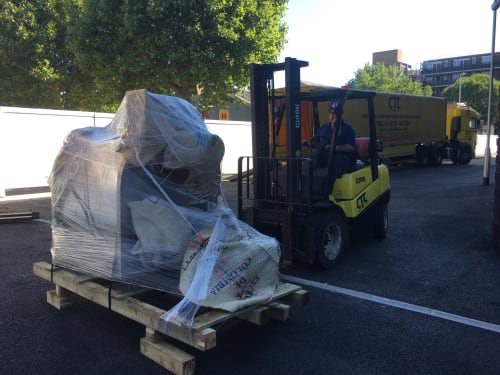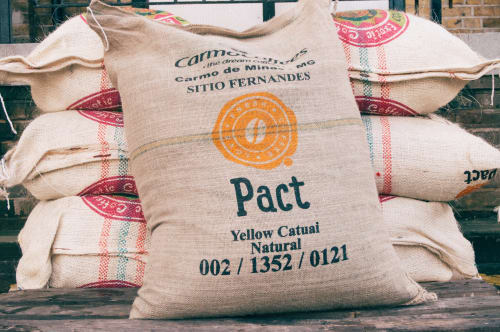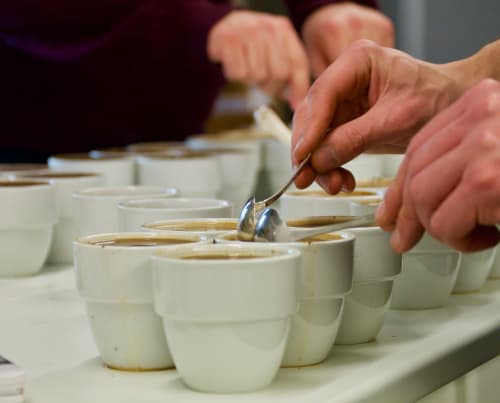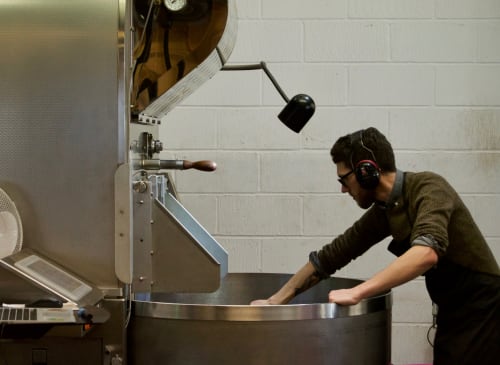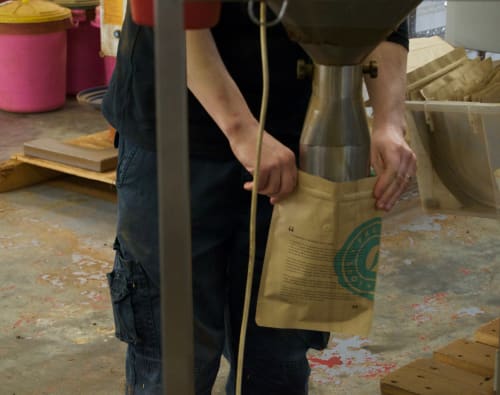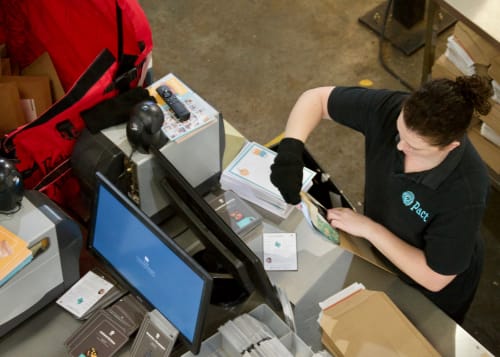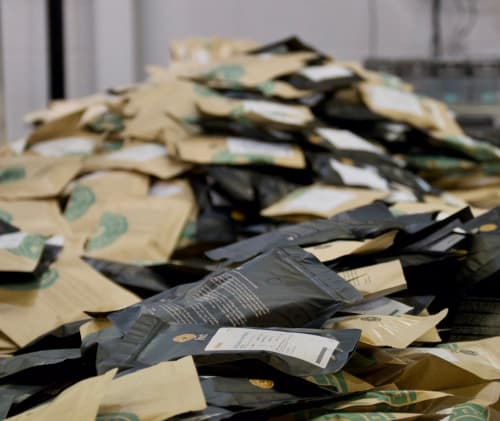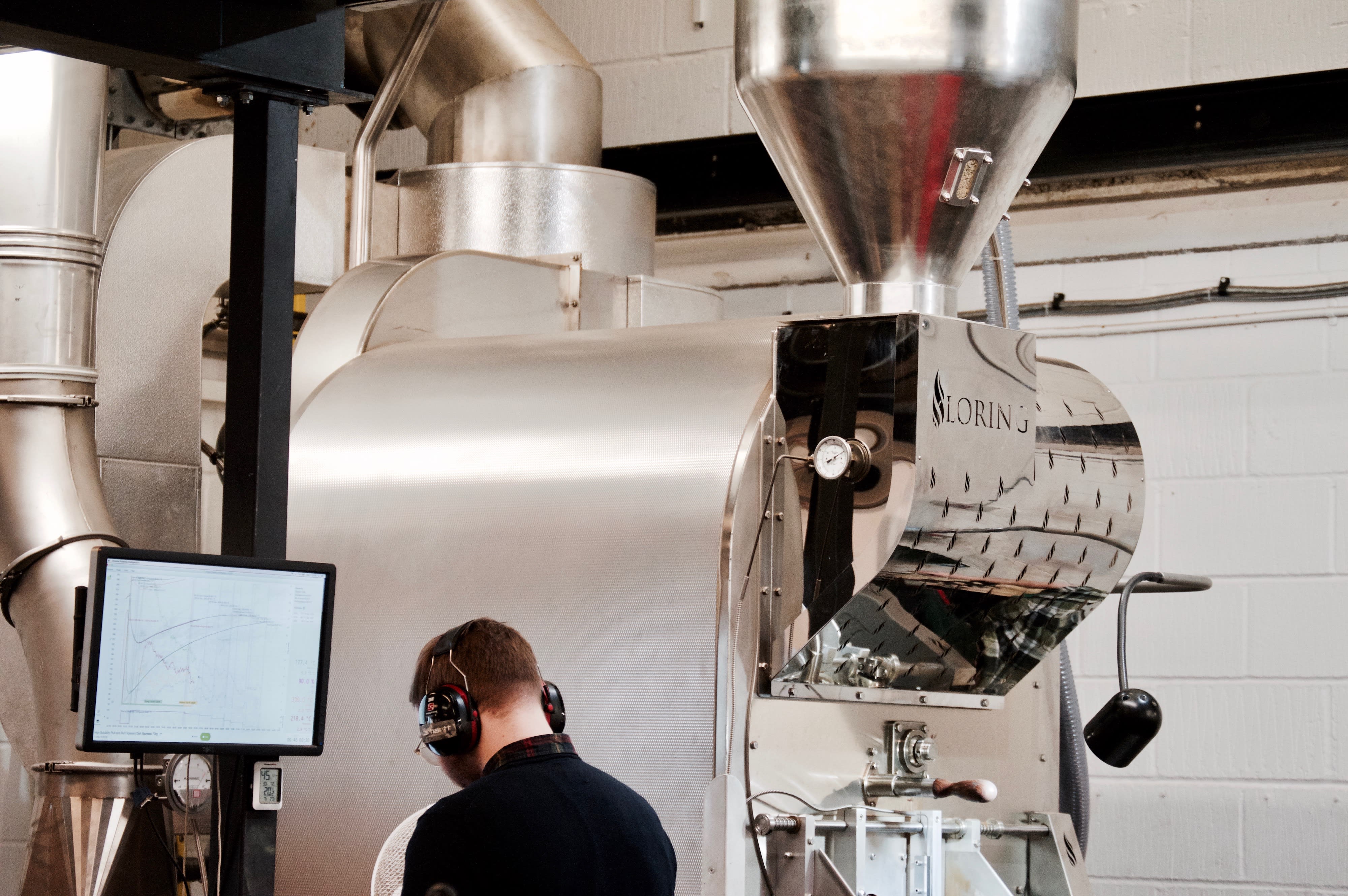| _tt_enable_cookie |
.pactcoffee.com |
1 year |
This cookie is used to remember the user's preferences regarding the use of cookies on the website.
|
| signup-cache |
www.pactcoffee.com |
5 days |
|
| _pinterest_ct_ua |
.ct.pinterest.com |
1 year |
This cookie is being set in relation to Pinterest Marketing
|
| _vwo_uuid |
.pactcoffee.com |
1 year 1 month |
This cookie name is associated with the product Visual Website Optimiser, by USA based Wingify. The tool helps site owners measure the performance of different versions of web pages. This cookie ensures a visitor always sees the same version of a page and is used to track behaviour to measure the performance of different page versions.
|
| voucher-cache |
www.pactcoffee.com |
5 days |
This cookie caches vouchers on our site.
|
| wmc |
.workable.com |
1 year 1 month |
This cookie is used to remember a user's choice about cookies on themodernmilkman.co.uk. It is used to identify whether the user has accepted the cookie consent box.
|
| __cfruid |
.pactcoffee.zendesk.com |
Session |
Cookie associated with sites using CloudFlare, used to identify trusted web traffic.
|
| __cfruid |
.support.pactcoffee.com |
Session |
Cookie associated with sites using CloudFlare, used to identify trusted web traffic.
|
| __stripe_sid |
.business.pactcoffee.com |
30 minutes |
This cookie is associated with Calendly, a Meeting Schedulers that some websites employ. This cookie allows the meeting scheduler to function within the website.
|
| _vis_opt_s |
.pactcoffee.com |
3 months 10 days |
This cookie name is associated with the product Visual Website Optimiser, by USA based Wingify. The tool helps site owners measure the performance of different versions of web pages. This cookie distinguishes between new and returning visitors.
|
| _vwo_uuid_v2 |
.pactcoffee.com |
1 year |
This cookie name is associated with the product Visual Website Optimiser, by USA based Wingify. The tool helps site owners measure the performance of different versions of web pages. This cookie ensures a visitor always sees the same version of a page and is used to track behaviour to measure the performance of different page versions.
|
| FPGSID |
.pactcoffee.com |
30 minutes |
This cookie is used to preserve user session state across page requests.
|
| VISITOR_PRIVACY_METADATA |
.youtube.com |
6 months |
This cookie is used to store the user's consent and privacy choices for their interaction with the site. It records data on the visitor's consent regarding various privacy policies and settings, ensuring that their preferences are honored in future sessions.
|
| sitewide-banner |
www.pactcoffee.com |
15 days |
|
| __attentive_cco |
www.pactcoffee.com |
1 year 1 month |
This cookie is used to store the customer consent opt-out choice.
|
| _vwo_sn |
.pactcoffee.com |
30 minutes |
This cookie is used to track the performance and effectiveness of different versions of web pages presented to users. It helps in conducting A/B testing to ensure that users are provided with the most optimal web page experience based on their interactions.
|
| li_gc |
.linkedin.com |
6 months |
Used to store guest consent to the use of cookies for non-essential purposes
|
| __stripe_mid |
.business.pactcoffee.com |
1 year |
This cookie is associated with Calendly, a Meeting Schedulers that some websites employ. This cookie allows the meeting scheduler to function within the website.
|
| _vis_opt_test_cookie |
.pactcoffee.com |
Session |
This cookie name is associated with the product Visual Website Optimiser, by USA based Wingify. The tool helps site owners measure the performance of different versions of web pages. This cookie tests if the browser is set to allow cookies.
|
| _vwo_ds |
.pactcoffee.com |
3 months |
This cookie is used by Visual Website Optimizer to record the sequence of pages visited by a user including any variations as part of A/B split testing to help improve the website's layout, design, or content.
|
| cf_clearance |
.support.pactcoffee.com |
1 year |
This cookie is used by the CloudFlare service to identify trusted web traffic and override any security restrictions based on the visitor's IP address. It is essential for supporting a website's security features and in providing protection against malicious visitors.
|
| hmt_id |
api.hcaptcha.com |
1 month |
This cookie is used for security purposes and to help distinguish between humans and bots on website forms.
|
| __cf_bm |
.workable.com |
30 minutes |
This cookie is used to distinguish between humans and bots. This is beneficial for the website, in order to make valid reports on the use of their website.
|
| _help_center_session |
support.pactcoffee.com |
Session |
This cookie is used to maintain a user session by the server for the Help Center provided by Tillhub, allowing users to navigate and use the help center features without interruption.
|
| confirmation-cache |
.pactcoffee.com |
1 hour |
|
| gift-discount |
.pactcoffee.com |
5 days |
|
| signup-b-cache |
.pactcoffee.com |
5 days |
|
| account-banner |
.pactcoffee.com |
15 days |
|
| token |
.pactcoffee.com |
1 day |
Security token for opt out functionality
|
| /^_vis_opt_exp_([^_]+)_split$/i |
.pactcoffee.com |
3 months 10 days |
This cookie is created when one of the variations is chosen for the visitor, but the visitor is not yet redirected to the variation page. It exists so that VWO can verify that the variation page corresponds to the chosen variation after landing on the page. The value is >=2 (as 1 corresponds to Control and it’s not created in case the Control is chosen)
NOTE: This cookie is created only for Split URL campaigns.
|
| _vis_opt_out |
.pactcoffee.com |
10 years |
This cookie indicates that the visitor should not be made part of any campaign. Its value is 1
|
| /^_vwo_uuid_([^_]+)$/i |
.pactcoffee.com |
10 years |
This cookie is created for each cross-domain campaign. It generates a unique id for every visitor and is used for the report segmentation feature in VWO, and it also allows you to view data in a more refined manner
|
| debug_vwo_sn |
.pactcoffee.com |
30 minutes |
This cookie name is associated with the product Visual Website Optimiser, by USA based Wingify. This cookie stores session-level information
|
| _vwo_referrer |
.pactcoffee.com |
15 seconds |
This cookie name is associated with the product Visual Website Optimiser, by USA based Wingify. This cookie stores referral info allowing VWO to identify the original Traffic source in case of the Split URL campaign
NOTE: This cookie is created only for Split URL campaigns but can be read by all campaign types.
|
| _vwo |
.pactcoffee.com |
68 years 1 month |
This cookie name is associated with the product Visual Website Optimiser, by USA based Wingify. This cookie is a jar of all the cookies. It is currently created only for the Safari browser. In the future, it would replace all the cookies. The actual expiry of a cookie doesn’t matter as it stores the expiry of cookies set in it and keeps on expiring them
|
| wingify_push_db_status |
.pactcoffee.com |
27 years 4 months |
This cookie name is associated with the product Visual Website Optimiser, by USA based Wingify. This cookie stores the subscription sync status of the subscriber with VWO Engage’s Server
|
| debug_vwo_uuid |
.pactcoffee.com |
10 years |
This cookie name is associated with the product Visual Website Optimiser, by USA based Wingify. This cookie generates a unique id for every visitor and is used for the report segmentation feature in VWO, and it also allows you to view data in a more refined manner
|
| /^debug_vis_opt_exp_([^_]+)_split$/i |
.pactcoffee.com |
3 months 10 days |
This cookie name is associated with the product Visual Website Optimiser, by USA based Wingify. This cookie is created when one of the variations is chosen for the visitor, but the visitor is not yet redirected to the variation page. It exists so that VWO can verify that the variation page corresponds to the chosen variation after landing on the page. The value is >=2. As 1 corresponds to control and it’s not created if control is chosen
|
| wingify_push_subscription_id |
.pactcoffee.com |
27 years 4 months |
This cookie name is associated with the product Visual Website Optimiser, by USA based Wingify. This cookie stores the subscription ID to uniquely identify the subscriber generated by the browser
|
| /^debug_vis_opt_exp_([^_]+)_exclude$/i |
.pactcoffee.com |
3 months 10 days |
This cookie name is associated with the product Visual Website Optimiser, by USA based Wingify. This cookie is created when a visitor has been excluded from a Test Campaign due to the traffic percentage specifications. The value is always 1
|
| wingify_push_subscription_endpoint |
.pactcoffee.com |
27 years 4 months |
This cookie name is associated with the product Visual Website Optimiser, by USA based Wingify. This cookie stores the subscription endpoint of the subscription object specific to the browser(Chrome/Firefox)
|
| pushcrew_opt_out |
.pactcoffee.com |
27 years 4 months |
This cookie name is associated with the product Visual Website Optimiser, by USA based Wingify. This cookie is used for opting-out
|
| wingify_push_do_not_show_notification_popup |
.pactcoffee.com |
14 days |
This cookie name is associated with the product Visual Website Optimiser, by USA based Wingify. This cookie stores the information if the first-step opt-in should show up or not. Valid only for 2 Step Opt-in
|
| pshcrw_update_subId |
.pactcoffee.com |
27 years 4 months |
This cookie name is associated with the product Visual Website Optimiser, by USA based Wingify. This cookie is used for retrying the storage of subscriptions with VWO Engage’s Server. Used only in cases when the server is not reachable due to network issues
|
| /^debug_vis_opt_exp_([^_]+)_combi$/i |
.pactcoffee.com |
3 months 10 days |
This cookie name is associated with the product Visual Website Optimiser, by USA based Wingify. This cookie is created when a visitor is chosen for a particular variation for a test. This cookie ensures that visitors see the same variation when they revisit the page in the future. Here the Control always has the value of 1, Variation #1 always has the value of 2, and Variation #2 has a value of 3, and so on
|
| wingify_push_subscriber_lang |
.pactcoffee.com |
27 years 4 months |
This cookie name is associated with the product Visual Website Optimiser, by USA based Wingify. This cookie stores the subscriber's browser language
|
| wingify_do_not_show_chicklet |
.pactcoffee.com |
27 years 4 months |
This cookie name is associated with the product Visual Website Optimiser, by USA based Wingify. This cookie is used to decide if the chicklet for opting to notifications should be shown or not
|
| _wingify_pc_uuid |
.pactcoffee.com |
27 years 4 months |
This cookie name is associated with the product Visual Website Optimiser, by USA based Wingify. This cookie stores the subscriber ID to uniquely identify the subscriber. VWO generates this randomly
|
| wingifyEcomData-* |
.pactcoffee.com |
27 years 4 months |
This cookie name is associated with the product Visual Website Optimiser, by USA based Wingify. This cookie is persisted when the subscriber becomes part of Shopify segments created through VWO Engage App
|
| wingify_push_gcm_id |
.pactcoffee.com |
2 hours 46 minutes |
This cookie name is associated with the product Visual Website Optimiser, by USA based Wingify. This cookie stores the FCM ID of the customer to identify which FCM key was used for subscribing
|
| wingifyRetrySegment-* |
.pactcoffee.com |
27 years 4 months |
This cookie name is associated with the product Visual Website Optimiser, by USA based Wingify. This cookie is persisted when wingifySegment-* cookie cannot be synced with VWO Engage Server
|
| /^debug_vis_preview_([^_]+)$/i |
.pactcoffee.com |
Session |
This cookie name is associated with the product Visual Website Optimiser, by USA based Wingify. This cookie is generated when you switch variations in preview mode
|
| wingifySegment-* |
.pactcoffee.com |
27 years 4 months |
This cookie name is associated with the product Visual Website Optimiser, by USA based Wingify. This cookie is persisted only when the subscriber is part of a segment that the visitor creates from the VWO Engage App
|
| debug_vis_opt_test_cookie |
.pactcoffee.com |
Session |
This cookie name is associated with the product Visual Website Optimiser, by USA based Wingify. This cookie is created to detect if the cookies are enabled on the visitor's browser or not. It also helps in tracking the number of browser sessions a visitor has gone through. The value of this cookie is always 1
|
| pshcrw_v_k |
.pactcoffee.com |
27 years 4 months |
This cookie name is associated with the product Visual Website Optimiser, by USA based Wingify. This cookie stores the public VAPID Key of the customer to identify which VAPID key was used for subscribing
|
| /^debug_vis_opt_exp_([^_]+)_goal_([^_]+)$/i |
.pactcoffee.com |
3 months 10 days |
This cookie name is associated with the product Visual Website Optimiser, by USA based Wingify. This cookie is created when a Test Campaign goal is triggered. This cookie, when created, will always have a value of 1
|
| wingify_push_subscriber_id |
.pactcoffee.com |
27 years 4 months |
This cookie name is associated with the product Visual Website Optimiser, by USA based Wingify. This cookie stores the subscriber ID to uniquely identify the subscriber. VWO generates this randomly
|
| _vwo_global_opt_out |
.pactcoffee.com |
3 months 10 days |
This cookie name is associated with the product Visual Website Optimiser, by USA based Wingify. This cookie is persisted when a visitor opts out of vwo on all websites in a given browser.
|
| /^_vis_opt_exp_([^_]+)_combi_choose_([^_]+)$/i |
.pactcoffee.com |
1 year |
This cookie name is associated with the product Visual Website Optimiser, by USA based Wingify. This cookie stores the chosen combination. It’s a temporary cookie that gets deleted when the campaign changes are applied
|
| _vwo_global_opt_out |
.pactcoffee.com |
3 months 10 days |
This cookie name is associated with the product Visual Website Optimiser, by USA based Wingify. This cookie is persisted when a visitor opts out of vwo on all websites in a given browser.
|
| /^_vwo_uuid_([^_]+)_([^_]+)$/i |
.pactcoffee.com |
10 years |
This cookie name is associated with the product Visual Website Optimiser, by USA based Wingify. This cookie is created for each cross-domain campaign. It generates a unique id for every visitor and is used for the report segmentation feature in VWO. It also allows you to view data in a refined manner
|
| /^_vis_opt_exp_([^_]+)_split_([^_]+)$/i |
.pactcoffee.com |
3 months 10 days |
This cookie name is associated with the product Visual Website Optimiser, by USA based Wingify. This cookie is created when one of the variations is chosen for the visitor, but the visitor is not yet redirected to the variation page. Using this, VWO verifies that the variation page corresponds to the chosen variation after landing on the page. The value will always be >=2 as it won’t be created in case the control is chosen
|
| _vwo_ssm |
.pactcoffee.com |
10 years |
This cookie name is associated with the product Visual Website Optimiser, by USA based Wingify. This cookie is used for testing and is created only on sites that use the HTTP protocol. This is used to check if VWO can create cookies on them, post which this cookie is deleted.
|
| /^_vis_opt_exp_([^_]+)_exclude_([^_]+)$/i |
.pactcoffee.com |
3 months 10 days |
This cookie name is associated with the product Visual Website Optimiser, by USA based Wingify. This cookie is created when a visitor has been excluded from a campaign due to the traffic percentage specifications. The value of this cookie is always 1
|
| /^_vis_opt_exp_([^_]+)_combi_([^_]+)$/i |
.pactcoffee.com |
3 months 10 days |
This cookie name is associated with the product Visual Website Optimiser, by USA based Wingify. This cookie is created when a visitor is chosen for a particular variation of a test. It ensures that visitors see the same variation when they revisit the page. Here the Control always has the value of 1, Variation #1 always has the value of 2, Variation #2 has the value of 3, and so on
|
| /^_vis_opt_exp_([^_]+)_goal_([^_]+)_([^_]+)$/i |
.pactcoffee.com |
3 months 10 days |
This cookie name is associated with the product Visual Website Optimiser, by USA based Wingify. This cookie is created when a campaign goal is triggered. When created, this cookie always has a value of 1
|
| debug_vwo_ds |
.pactcoffee.com |
1 year |
This cookie name is associated with the product Visual Website Optimiser, by USA based Wingify. This cookie stores persistent visitor-level data for VWO Insights
|
| /^_vis_opt_exp_([^_]+)_combi_choose_([^_]+)$/i |
.pactcoffee.com |
1 year |
This cookie name is associated with the product Visual Website Optimiser, by USA based Wingify. This cookie stores the chosen combination. It’s a temporary cookie that gets deleted when the campaign changes are applied
|
| /^_vis_opt_exp_([^_]+)_combi_choose$/i |
.pactcoffee.com |
1 year |
This cookie name is associated with the product Visual Website Optimiser, by USA based Wingify. This cookie name is associated with the product Visual Website Optimiser, by USA based Wingify. This cookie stores the chosen combination. It’s a temporary cookie that gets deleted when the campaign changes are applied
|
| /^_vis_opt_exp_([^_]+)_goal_([^_]+)$/i |
.pactcoffee.com |
3 months 10 days |
This cookie name is associated with the product Visual Website Optimiser, by USA based Wingify.This cookie is created when a campaign goal is triggered. This cookie, when created, will always have a value of 1
|
| /^_vis_opt_exp_([^_]+)_combi$/i |
.pactcoffee.com |
3 months 10 days |
This cookie name is associated with the product Visual Website Optimiser, by USA based Wingify. This cookie is created when a visitor is chosen for a particular variation for a test. This cookie makes sure that visitors see the same variation when they revisit the page in the future. Here the Control has a value of 1, Variation #1 has a value of 2, Variation #2 has a value of 3, and so on
|
| /^_vis_opt_exp_([^_]+)_exclude$/i |
.pactcoffee.com |
3 months 10 days |
This cookie name is associated with the product Visual Website Optimiser, by USA based Wingify. This cookie is created when a visitor has been excluded from a Test Campaign due to the traffic percentage specifications. The value is always 1
|
| wingify_push_subscription_status |
.pactcoffee.com |
27 years 4 months |
This cookie name is associated with the product Visual Website Optimiser, by USA based Wingify. This cookie stores the information if the visitor is subscribed or unsubscribed to VWO Engage
|
| wingify_donot_track_actions |
.pactcoffee.com |
27 years 4 months |
This cookie name is associated with the product Visual Website Optimiser, by USA based Wingify. This cookie persists the information that subscriber actions should be tracked
|
| debug_vwo_referrer |
.pactcoffee.com |
15 seconds |
This cookie name is associated with the product Visual Website Optimiser, by USA based Wingify. This cookie stores referral info allowing VWO to identify the original Traffic source in case of the Split URL campaign
|
| debug_vis_opt_variation_page |
.pactcoffee.com |
Session |
This cookie name is associated with the product Visual Website Optimiser, by USA based Wingify. This cookie persists the selection by the person using previews
|
